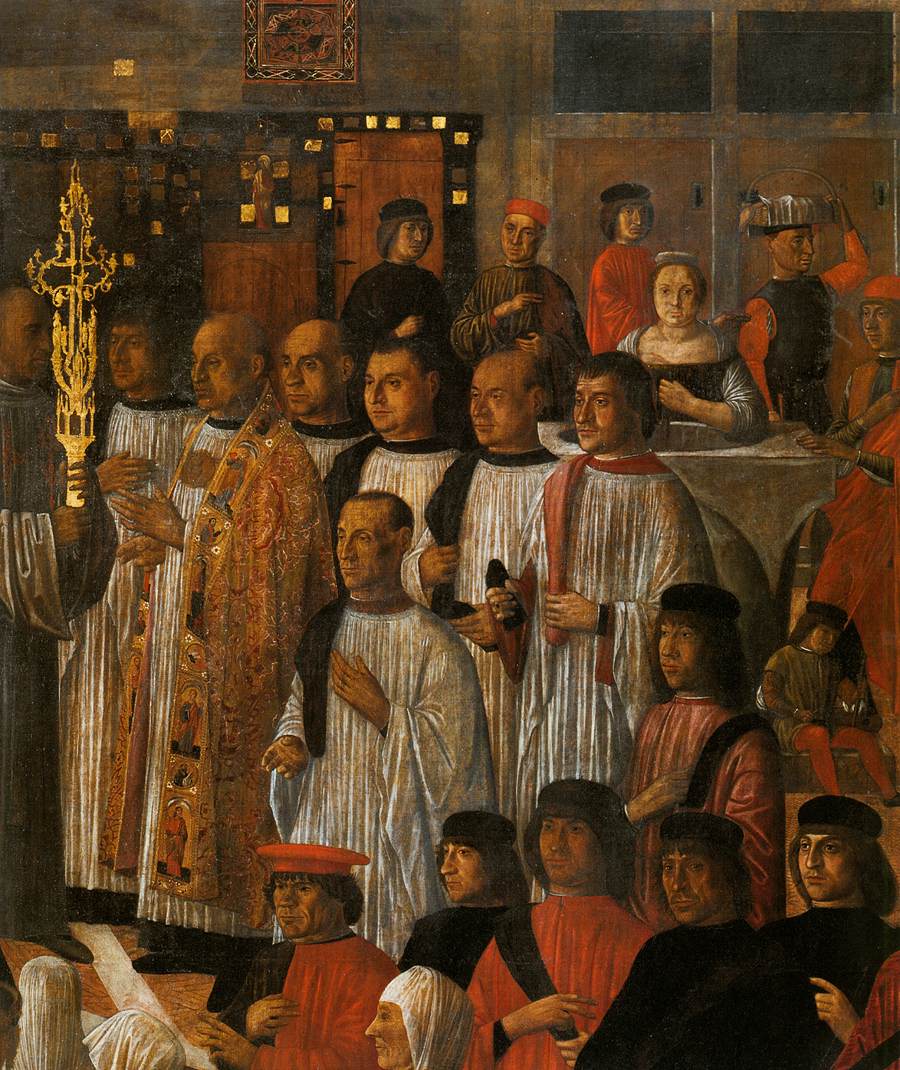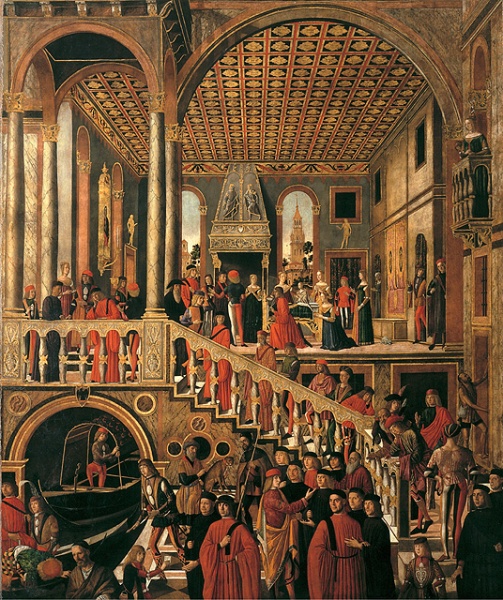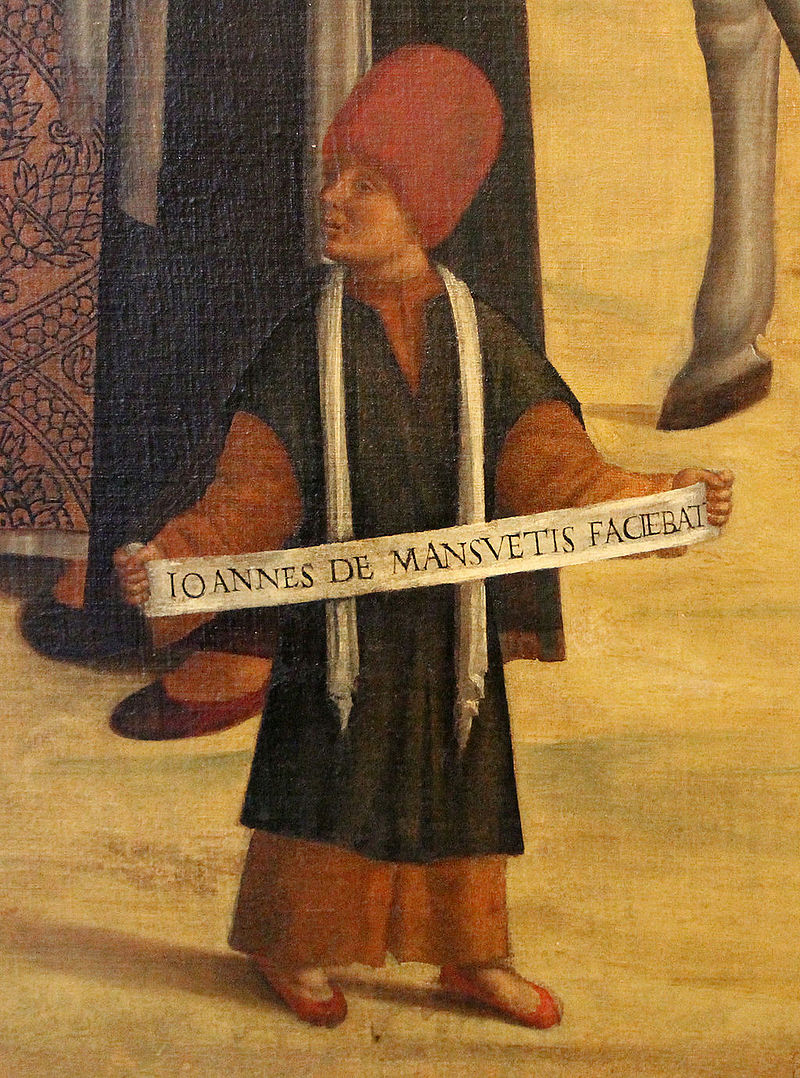On 26 March 1527, painter Giovanni di Niccoló Mansueti was no longer a member of the Scuola Grande della Misericordia, a Venetian lay confraternity. This suggest that the artists died before this date, but after 6 September 1526, when he witnessed a notarial act.
Nothing is known of Giovanni Mansueti’s early life: the first documented reference dates to 22 July 1485, when he was already a trained painter. Nevertheless, the artist described himself as a ‘pupil of Bellini’ in an inscription on the painting Miracle of the relic of the True Cross in Campo S. Lio (c. 1496). In fact, this telero (a large-scale painting on canvas intended to be applied directly to a wall) was part of a cycle co-realized by Gentile Bellini, Vittore Carpaccio, Lazzaro Bastiani, and Mansueti for the the Scuola Grande di San Giovani Evangelista, another Venetian confraternity. Like Bellini and Carpaccio, Mansueti created topographically accurate views of late fifteenth-century Venice, featuring a wealth of anecdotal detail and precise renditions of contemporary costume. Although these paintings should not be considered true-to-life snapshots of Venetian life at the turn of the sixteenth-century, they constitute engrossing micro-worlds which can never tire the viewer. Yet, critical judgment on Mansueti has generally been harsh: he has been described as a pedant painter whose stiff style does not show signs of development. On the contrary, contemporary documents show his relative wealth and status in Venetian society: in 1504, he owned a property in the parish of Santa Sofia; in 1506 his daughter Victoria received a dowry of 200 ducats; from 1509, documents describe his as ‘magister’ rather than ‘ser,’ a sign of his recognized ability as a master painter.
References: Alessandro De Lillo, “Mansueti, Giovanni,” Dizionario Biografico degli Italiani, Vol. 69 (2007), www.treccani.it/enciclopedia/giovanni-mansueti_(Dizionario_Biografico)/; Peter Humfrey, “Mansueti, Giovanni.” Grove Art Online. Oxford Art Online, http://www.oxfordartonline.com/subscriber/article/grove/art/T053892.
Further Reading: Patricia F. Brown, Venetian Narrative Painting in the Age of Carpaccio (New Haven and London, 1988).
Miracle of the Relic of the Holy Cross in Campo San Lio, c. 1494, tempera on canvas, 318 x 458 cm. Gallerie dell’Accademia, Venice, cat. 564.
Details of Miracle of the Relic of the Holy Cross in Campo San Lio, c. 1494, tempera on canvas, 318 x 458 cm. Gallerie dell’Accademia, Venice, cat. 564.
Miraculous Healing of the Daughter of Benvegnudo da San Polo, c. 1505, tempera on canvas, 361 x 299 cm. Gallerie dell’Accademia, Venice, cat. 562.
Three episodes from the Life of St Mark, after 1518, c.1525-1526, tempera on canvas. Scuola di San Marco, Venice.
Detail of Giovanni di Niccoló Mansueti’s signature, from Three episodes from the Life of St Mark, after 1518, c.1525-1526, tempera on canvas. Scuola di San Marco, Venice.






